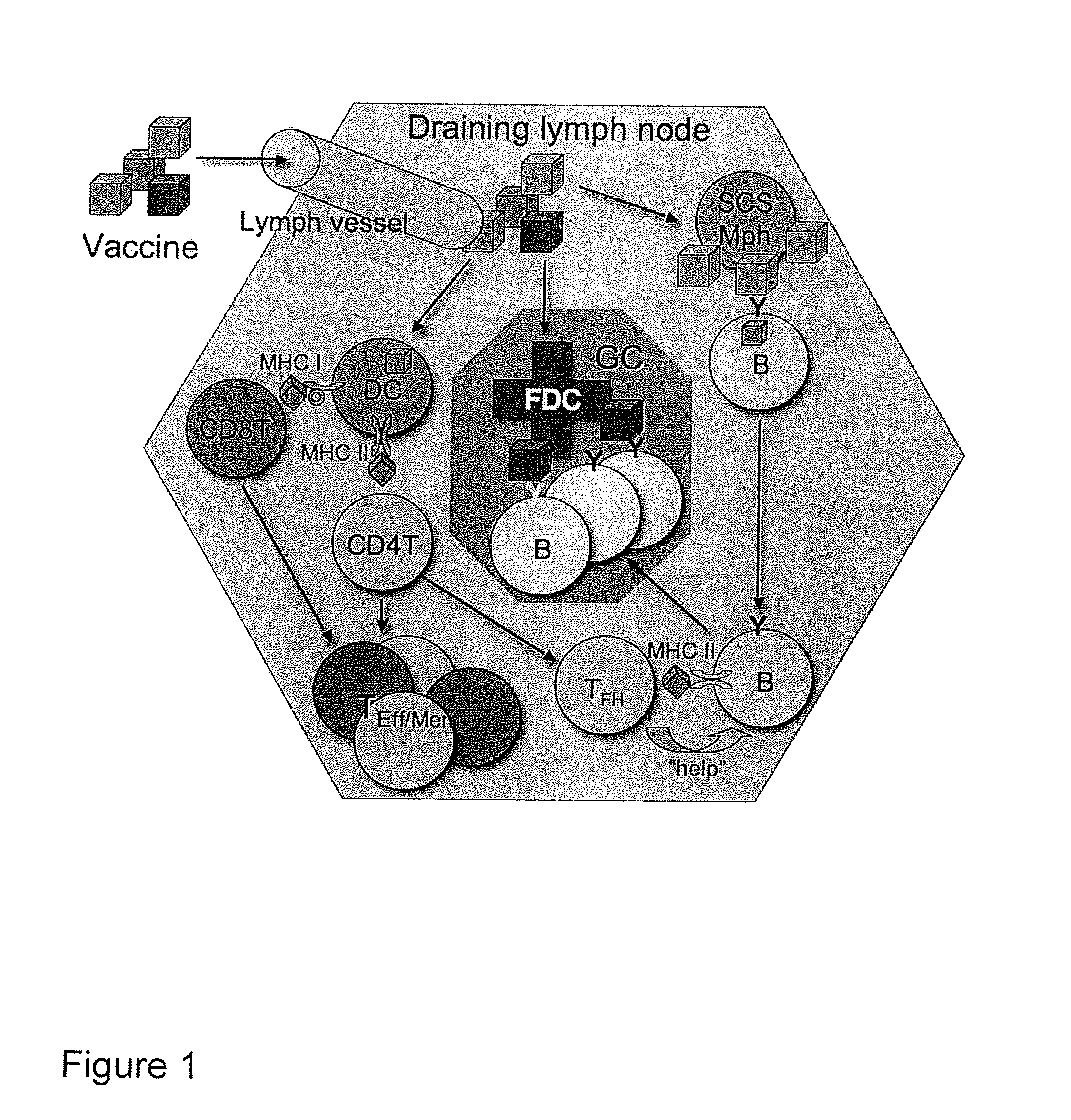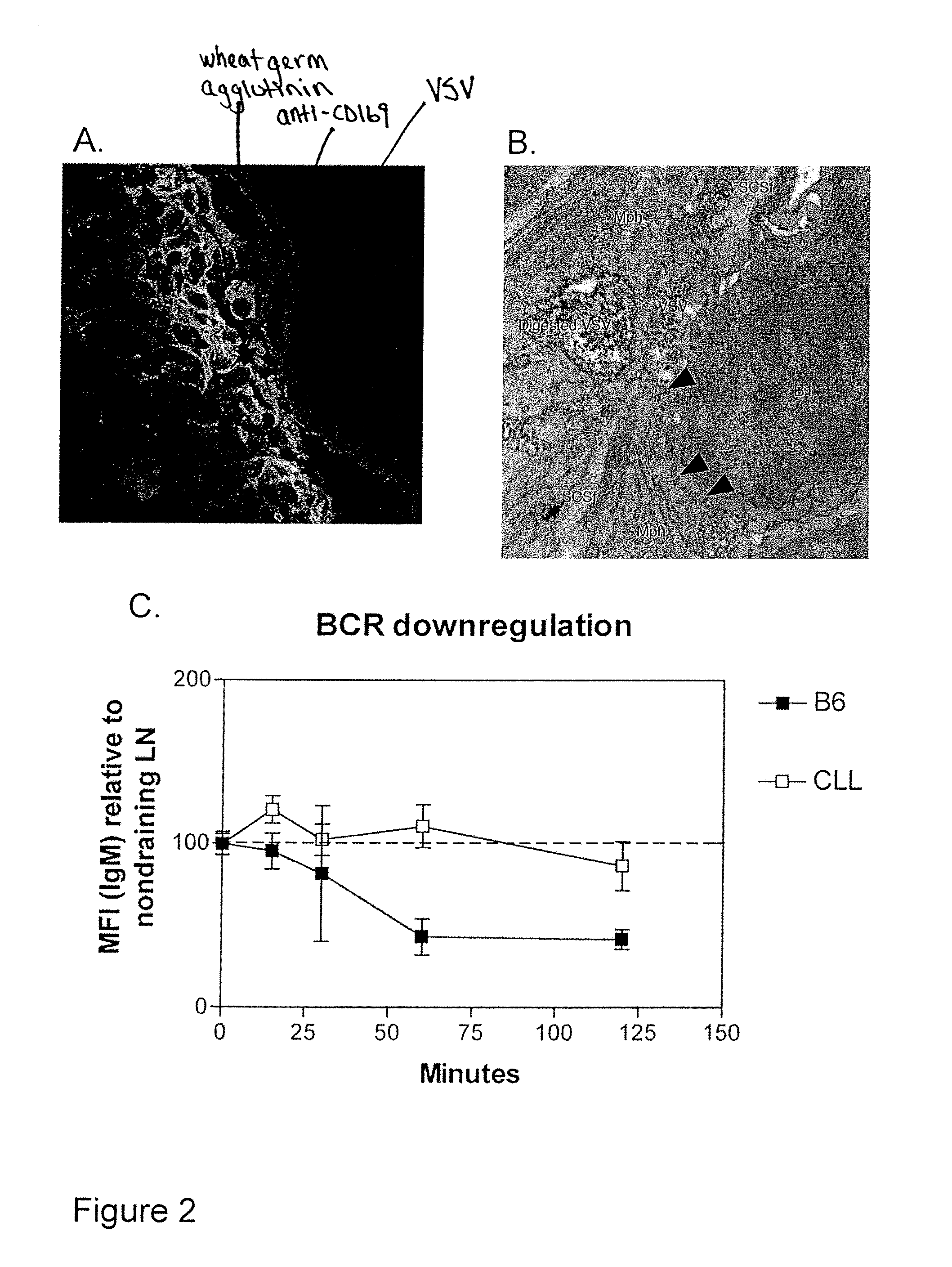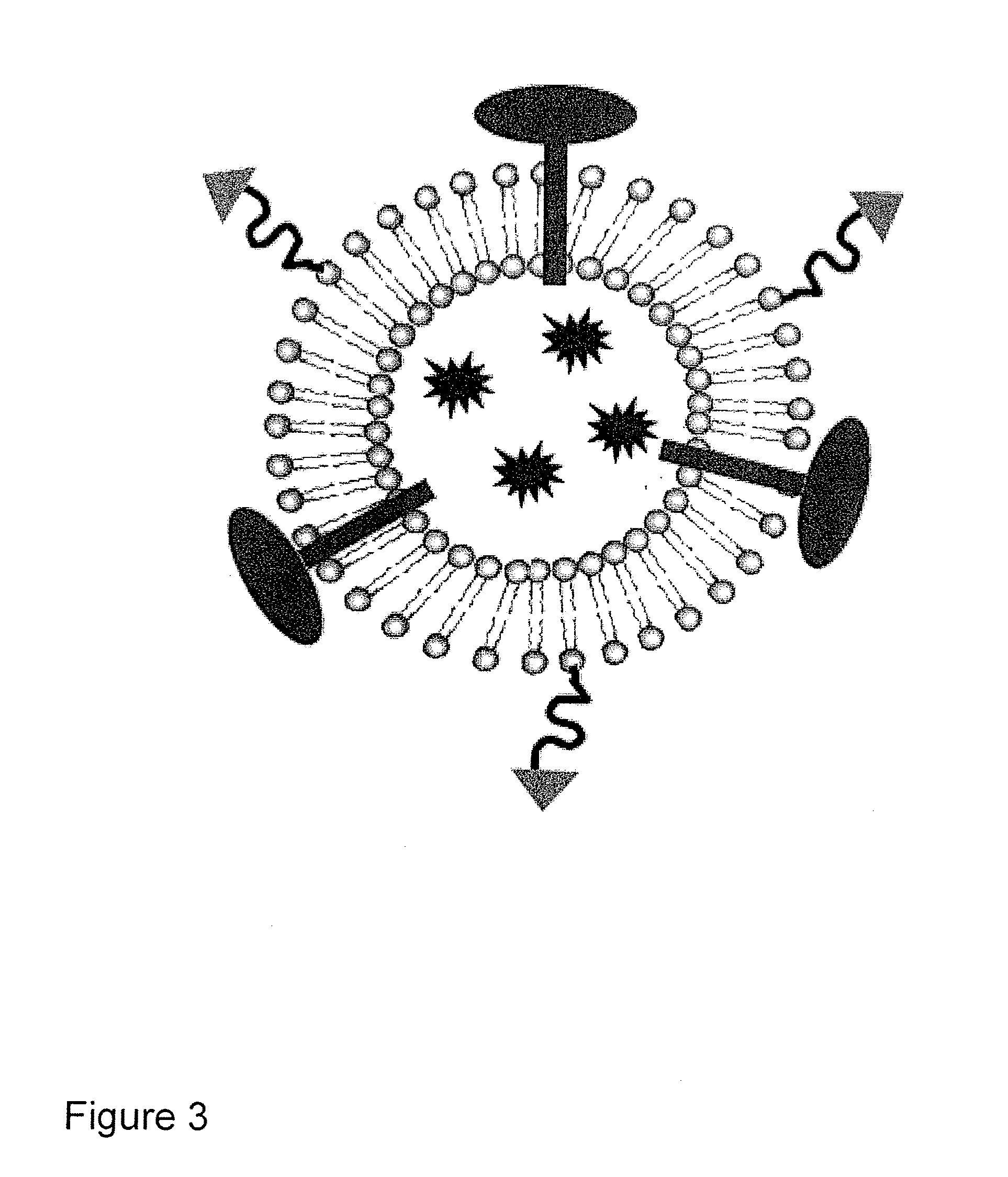Targeting of Antigen Presenting Cells with Immunonanotherapeutics
a technology of immunonanotherapy and antigen presenting cells, which is applied in the direction of antibody medical ingredients, carrier-bound antigen/hapten ingredients, immunological disorders, etc., can solve the problems of not providing such binding to other types of cells, and achieve the effects of reducing the incidence and reducing the severity of one or more symptoms
- Summary
- Abstract
- Description
- Claims
- Application Information
AI Technical Summary
Benefits of technology
Problems solved by technology
Method used
Image
Examples
example 2
Exemplary Lipid-Based Vaccine Nanotechnology Architectures
[0627]In some embodiments, small liposomes (10 nm-1000 nm) are manufactured and employed to deliver, in some embodiments, one or multiple immunomodulatory agents to cells of the immune system (FIG. 3). In general, liposomes are artificially-constructed spherical lipid vesicles, whose controllable diameter from tens to thousands of nm signifies that individual liposomes comprise biocompatible compartments with volume from zeptoliters (10−21 L) to femtoliters (10−15 L) that can be used to encapsulate and store various cargoes such as proteins, enzymes, DNA and drug molecules. Liposomes may comprise a lipid bilayer which has an amphiphilic property: both interior and exterior surfaces of the bilayer are hydrophilic, and the bilayer lumen is hydrophobic. Lipophilic molecules can spontaneously embed themselves into liposome membrane and retain their hydrophilic domains outside, and hydrophilic molecules can be...
example 3
In vivo Targeting of SCS-Mph using Fc Fragments from Human IgG
[0638]Fluorescent unmodified control nanoparticles (top panel, FIG. 24A) or Fc surface-conjugated targeted nanoparticles (middle and lower panel, FIG. 24A) were injected into footpads of anesthetized mice, and the draining popliteal lymph node was excised 1 hour later and single-cell suspensions were prepared for flow cytometry. Targeted nanoparticles were also injected into mice one week after lymph node macrophages had been depleted by injection of clodronate-laden liposomes (lower panel, FIG. 24A). The cell populations in gates were identified as nanoparticle-associated macrophages based on high expression of CD11b. These results indicate that (i) nanoparticle binding depends on the presence of clodronate-sensitive macrophages and (ii) targeted nanoparticles are bound to ˜twice as many macrophages as control nanoparticles.
[0639]The Panels on the right of FIG. 24 show fluorescent micrographs of frozen lymph node section...
example 4
Antigen-Bearing Targeted Nanoparticles are Highly Immunogenic and Induce High Antibody Titers
[0641]Groups of mice (5 / group) were immunized with: UV-inactivated vesicular stomatits virus (VSV, serotype Indiana) or with the purified immunogenic envelope glycoprotein (VSV-G) of VSV. VSV-G was either given in soluble form mixed with alum or conjugated to non-targeted or targeted (with surface immobilized human Fc) PLGA nanoparticles with or without alum as an adjuvant. The dose of free VSV-G was estimated to be ˜10-fold higher than the dose of VSV-G delivered with nanoparticles. Mice received a booster injection at day 55 after the primary immunization, and serum was obtained after 10 weeks and tested for neutralization of VSV-mediated plaque formation on Vero cells. Results show titers as the highest serum dilution that blocked plaque formation by at least 50%. Each symbol reflects the neutralizing anti-VSV titer in one mouse. The group of mice immunized with VSV-G presented on Fc-targ...
PUM
| Property | Measurement | Unit |
|---|---|---|
| diameter | aaaaa | aaaaa |
| density | aaaaa | aaaaa |
| binding density | aaaaa | aaaaa |
Abstract
Description
Claims
Application Information
 Login to View More
Login to View More - R&D
- Intellectual Property
- Life Sciences
- Materials
- Tech Scout
- Unparalleled Data Quality
- Higher Quality Content
- 60% Fewer Hallucinations
Browse by: Latest US Patents, China's latest patents, Technical Efficacy Thesaurus, Application Domain, Technology Topic, Popular Technical Reports.
© 2025 PatSnap. All rights reserved.Legal|Privacy policy|Modern Slavery Act Transparency Statement|Sitemap|About US| Contact US: help@patsnap.com



